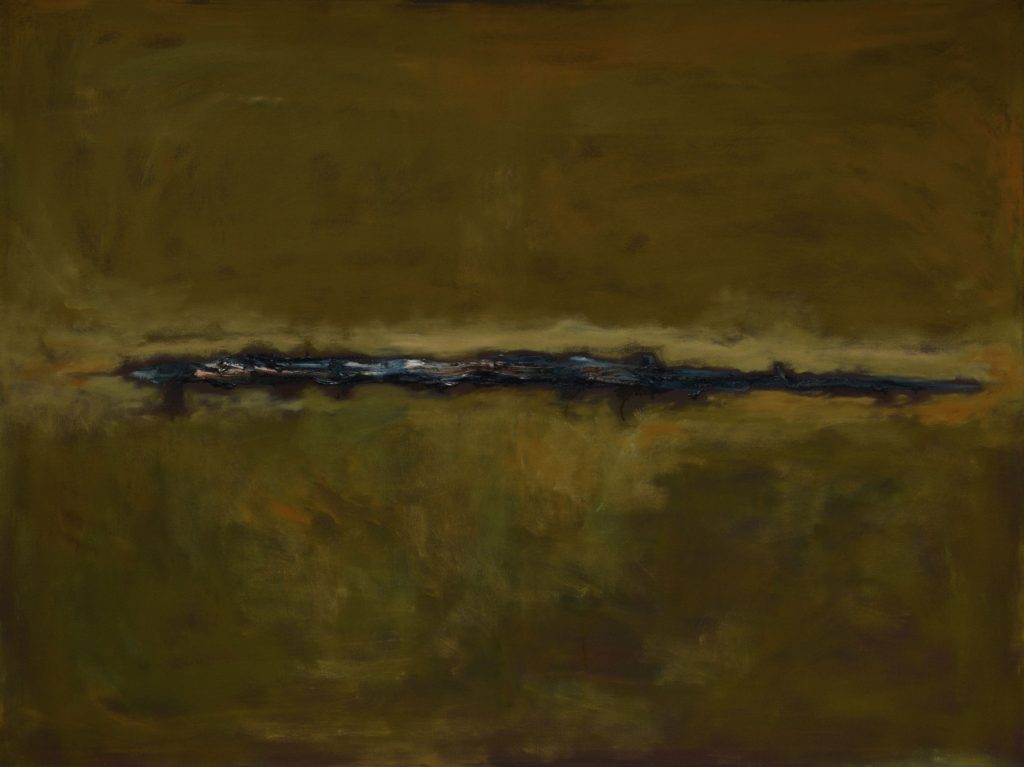
In It was Good: Making Art to the Glory of God, the wonderful book of essays published by Square Halo Books in 2007, Timothy Keller wrote,
“[W]hy does the Church and why does Christianity need artists?… [W]e can’t understand truth without art. You see, reason tells me about the truth, but I really cannot grasp what it means; I can’t understand it without art.”
Keller goes on to say that artists help us use our imaginations, moving us “from truth into the area of visualization.” Artists help to awaken not only our minds, but also our hearts, guiding us to ponder layer upon layer of revelations about God and about our own humanity. As Colorado pastor Matt Heard has remarked, artists—and the art they make—open the shutters of our hearts and stir us to deeper contemplation.
One such artist is Trung Pham, a Jesuit priest and Professor of Fine Arts at Seattle University. His “Mother Series,” comprised of eighteen representational paintings that explore the relationship between a mother and her child, invite us to consider the “extreme beauty” of love shown through sacrifice. Drawing from his own experience with his mother as a child in Vietnam and then later, in southern California, Pham depicts this extreme beauty with extreme intimacy: a mother cradling her womb in prayer, or holding her infant son, gently kissing the top of his head or gazing into his sleepy eyes as he lies totally vulnerable yet totally safe in her arms. A mother watching her infant son sleep, his belly full from having just nursed.
The extreme intimacy of these portraits put flesh and faces to the heartfelt cry of Christ himself, as he spoke over the city he loved with the devotion of a mother to her babies: “O Jerusalem, Jerusalem, the city that kills the prophets and stones those who are sent to it! How often would I have gathered your children together as a hen gathers her brood under her wings, and you were not willing!” (Matthew 23:37, ESV)
How can we, especially those of us who have never cradled an infant to our breasts, fully know the passion and sacrifice evoked in these words of our Lord? We start by looking to the artists among us, endowed by God to craft windows through which we can glimpse these greater truths.
However,it is not only through representational works that this can be accomplished. Abstract works, such as those currently on exhibit in Trung Pham’s solo show “CRACK,” at Kinsey Gallery through January 31, invite us into a different kind of contemplation. The twelve paintings in this series deal with the rifts that are common to all humanity, from the brokenness of sin to the opening of a chrysalis that promises newness of life.
As the artist writes in his statement for this show,
A narrow break
An opening
A sharp cut
A revelation of the mystery
A split second
An eruption
Disruption
Dazzling light
A new beginning
A snap
A flap
Thwack
Wide bright wings
A stunning transformation
A rupture
Fissure
A rift
Shift
Vulnerable flaw
Awe
A trembling opportunity
Standing before the paintings, as I did during a recent visit to his studio, we are invited to spend time contemplating the necessity of breakage in the life of faith. “For everything there is a season,” writes the author of Ecclesiastes, “a time to tear and a time to sew.” I left my visit to his studio with fresh images to help me visualize some of the “cracks” in my own life—fractured relationships I need to surrender to God, disrupted dreams I need to revisit, shifts in the horizon I need to set my gaze on as I move toward a new season of (foster) motherhood.
Ironically, it is often a work we see with our eyes that ultimately helps us to see with our hearts. This is certainly the case with the work of Trung Pham, whose work as mentioned earlier may be viewed through January 31 at Kinsey Gallery or by appointment in his studio.
CRACK
Trung Pham | Solo Show
Kinsey Gallery, Seattle University, 941 12th Ave, Seattle, WA 98122
January 9, 2014
4:30-7:30 PM
Opening Reception
Show runs through January 31, 2014

